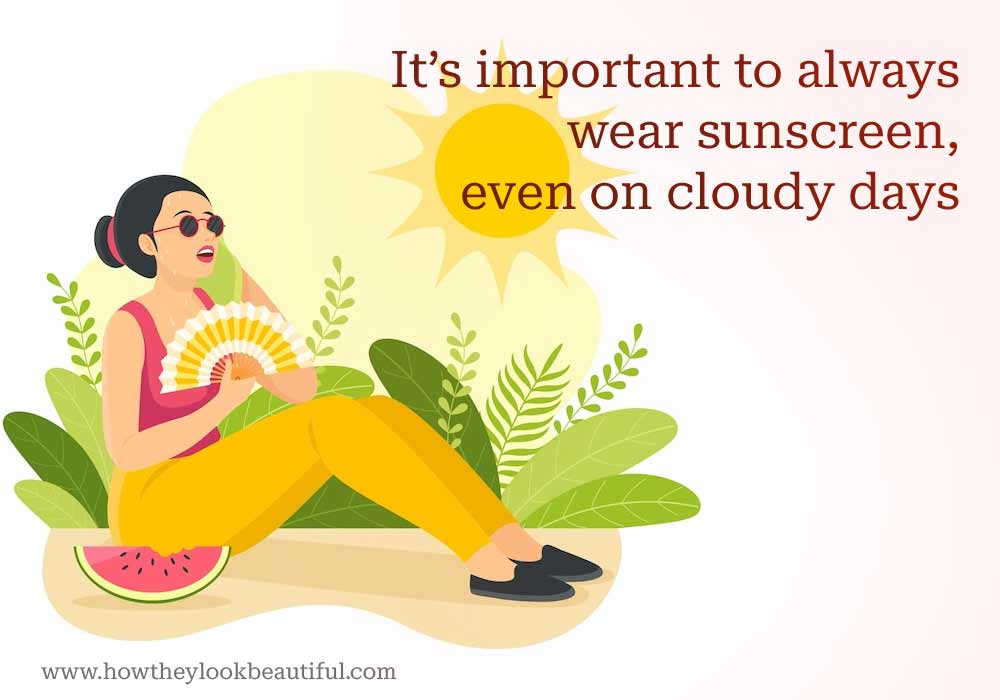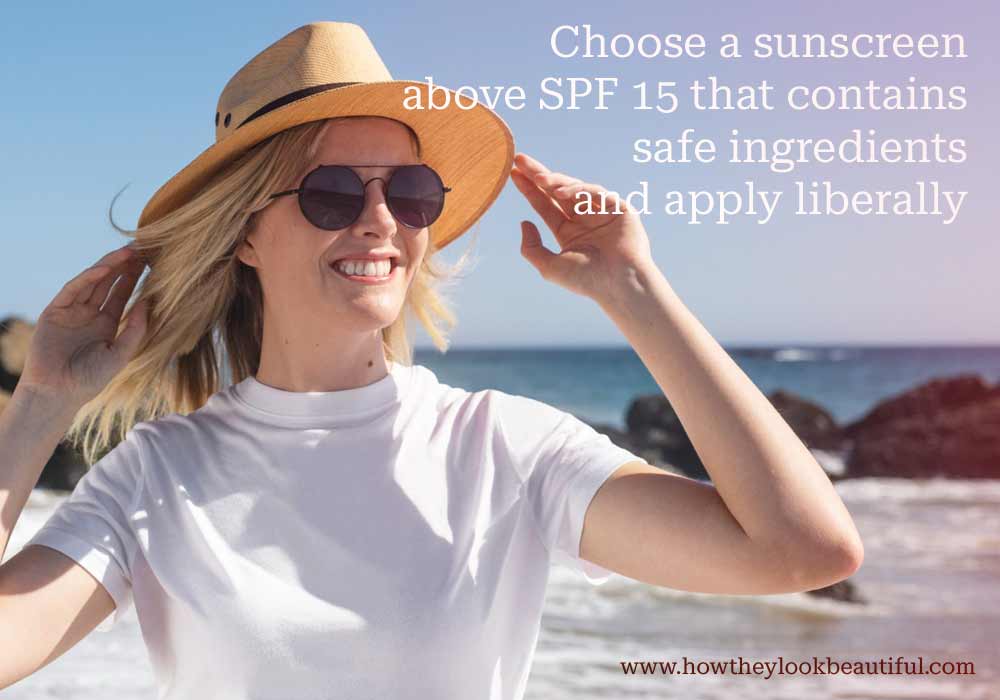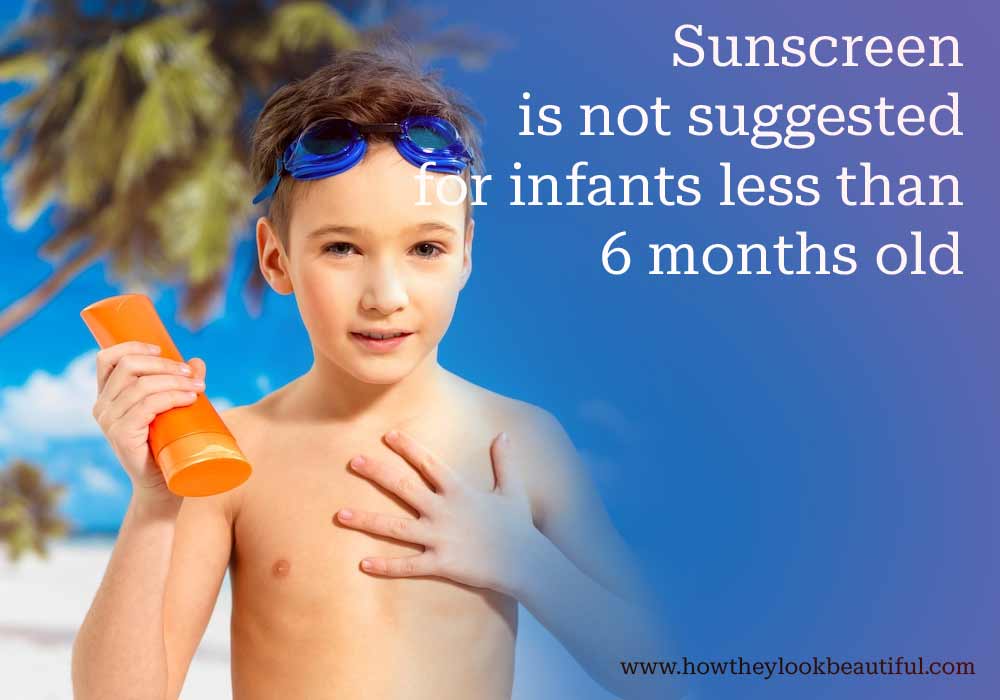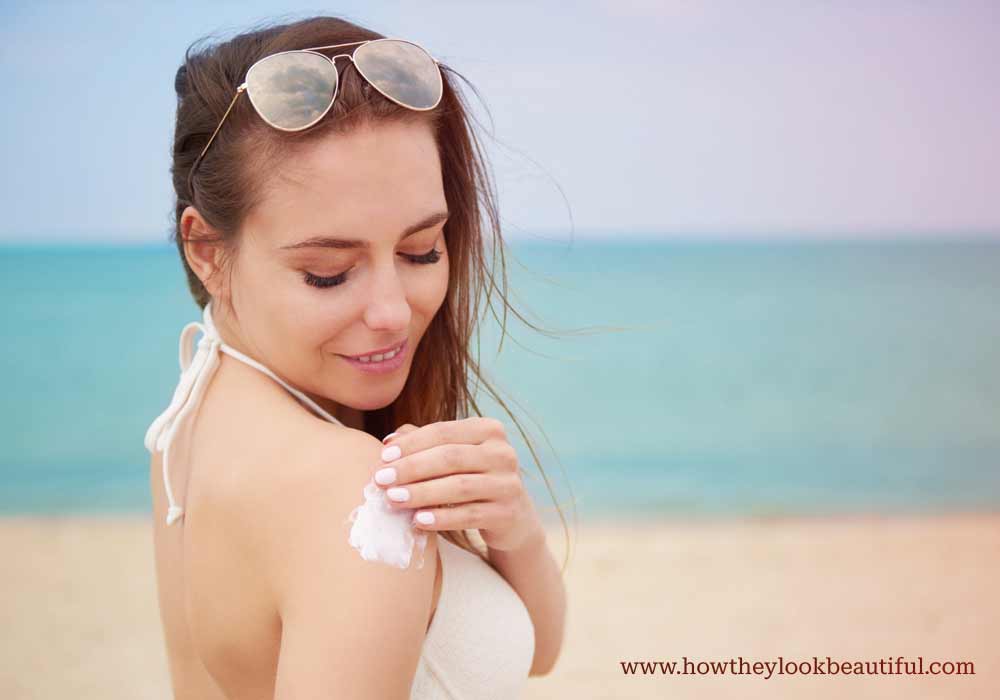Sunscreen is one of the most important skincare products that can help protect you from the harmful effects of the sun. Although many people think that they only need to use sunscreen when they are going to be outdoors for an extended period of time, it is actually important to use sunscreen every day, even if you are just going outside for a short period of time. There are a few reasons why it is important to use sunscreen every day.
What Are The Results of Wearing Sunscreen Everyday
Wearing sunscreen every day results in fewer wrinkles and sunspots. Also, it results in preventing skin cancer, which is the most common type of cancer in the United States, premature aging of the skin, and sunburn.
- What Are The Results of Wearing Sunscreen Everyday
- Importance of Wearing Sunscreen
- How Sunscreen Protects Your Skin
- The Difference Between Physical and Chemical Sunscreen
- How to Choose the Right and Safe Sunscreen for Your Skin?
- Are Chemicals in the Sunscreens Safe?
- Importance of Reapplying Sunscreen Liberally
- The Best Time to Apply Sunscreen
- Do I Need to Apply Sunscreen to My Baby?
- What Age Should You Start Wearing Sunscreen Everyday?
- Does Sunscreen Use Really Prevent Cancer?
- The difference between sunscreen and sunblock
- Does sunscreen lighten skin?
- Frequently asked questions
- Conclusion

1. Sunscreen Prevents Skin Cancer
Wearing sunscreen every day can help prevent skin cancer and premature aging of the skin. It is important to choose a sunscreen that has an SPF of 30 or higher and to apply it 15 minutes before you go outside. Be sure to reapply every two hours, or more often if you are swimming or sweating.
2. Sunscreen Prevents Sunburns
Wearing sunscreen every day can help protect you from the dangers of Sunburns. Sunburns can be painful and increase your risk for skin cancer. Just one bad sunburn can double your risk for melanoma, the deadliest form of skin cancer.
3. Sunscreen Prevents Premature Aging & Wrinkles
In addition to preventing skin cancer, wearing sunscreen every day can result in reducing the appearance of wrinkles, age spots, and other types of discoloration. Sun damage is one of the main causes of premature aging of the skin. By using daily sunscreen, you can help keep your skin looking young and healthy for years to come.
Importance of Wearing Sunscreen
Approximately 9,500 people in the U.S. are diagnosed with skin cancer every day. It is caused by exposure to ultraviolet (UV) radiation from the sun. So it’s important to always wear sunscreen, even on cloudy days. Ultraviolet radiation can also cause premature aging of the skin, which leads to wrinkles, dark spots (Freckles), and dryness. In addition, sunburns can be extremely painful and can lead to skin damage. Sunburns can cause pain, redness, swelling, and blistering of the skin.
How Sunscreen Protects Your Skin
Sunscreen works by absorbing, reflecting, or scattering sunlight before it reaches your skin. It is important to choose a sunscreen with an SPF of at least 15 and to apply it liberally and evenly to all exposed areas of skin, including the face, neck, ears, and hands. In addition to wearing sunscreen, you can protect your skin by seeking shade and wearing protective clothing, such as long-sleeved shirts and wide-brimmed hats.
The Difference Between Physical and Chemical Sunscreen
There are two different types of sunscreen: physical and chemical.
- Physical sunscreen works by sitting on top of the skin and reflecting the sun’s rays away. Chemical sunscreen, on the other hand, penetrates the skin and absorbs the sun’s rays.
- Both types of sunscreen are effective at protecting against UVB rays, which are the main cause of sunburn. However, physical sunscreen is also effective against UVA rays, which are associated with skin cancer. Chemical sunscreen is not as effective against UVA rays.
- Physical sunscreen typically contains zinc oxide or titanium dioxide. Chemical sunscreen is made with a variety of different chemicals, such as oxybenzone, avobenzone, octisalate, octocrylene, homosalate, and octinoxate.
Some people prefer physical sunscreen because it does not contain any chemicals. Others prefer chemical sunscreen because it is easier to spread and is often more effective. However, either of them is better than not wearing it.
Sunscreen should be applied 15 minutes before going outdoors, then reapplied every two hours (or immediately after swimming or sweating). Sunscreen should be applied to all exposed areas, including the ears, nose, lips, and eyes.
Which is Better? Physical or Chemical Sunscreen?
The answer may depend on your individual needs and preferences. If you have sensitive and acne-prone skin, you may find that physical sunscreens are more gentle and less likely to cause irritation. Chemical sunscreens tend to be more lightweight and cosmetically elegant, making them a good choice for everyday use. However, the best sunscreen is the one you will use!
UVA Vs UVB Rays
UV rays are electromagnetic radiation that is emitted from the sun. These rays are invisible to the naked eye and are divided into two types: UVA and UVB.
UVA rays are aging rays that penetrate deep into your dermis and makeup around 95% of the UV radiation that reaches the earth’s surface. They are less intense than UVB rays and have longer wavelengths of 315-400 nm. 50% UVA rays can penetrate glass and cause premature aging of the skin, as well as increase your risk for skin cancer.
UVB (ultraviolet B) rays – which have shorter wavelengths of 290–320 nm. and are largely blocked by glass, make up around 5% of the UV radiation that reaches the earth’s surface. They are more powerful than UVA rays – cause sunburns, premature aging, and cause most skin cancers while damaging DNA. The SPF number on a sunscreen tells you what percentage of UVB it blocks and not UVA rays. So it’s important to choose a broadspectrum sunscreen that provides both UVA and UVB protection.

How to Choose the Right and Safe Sunscreen for Your Skin?
There are a few things to consider when choosing sunscreens, such as SPF, water resistance and ingredients, your skin type, the climate you live in, and the activities you enjoy. The Food and Drug Administration (FDA) requires all sunscreen manufacturers to list their ingredients, active and inactive. Active ingredients work to protect your skin from the sun, while inactive ingredients help provide texture and scent.
The Ingredients: Some sunscreens use chemicals like oxybenzone and octinoxate, which can be harmful to humans and the environment. There are also physical sunscreens, which use minerals like zinc oxide and titanium dioxide. These are considered to be safer options.
The SPF: When choosing a sunscreen, the most important factor to consider is the SPF, or sun protection factor. The higher the SPF, the more protection the sunscreen will provide from harmful UV rays. You should at least use SPF 15 or more for general purpose use. It is important to choose a sunscreen that is also water-resistant and has an expiration date. However, it’s important to note that no sunscreen can block 100% of UV rays.
Some people believe an SPF of 30 means you can stay in the sun for twice as long as if you were wearing an SPF of 15. That’s not true. SPFs only measures how well a sunscreen protects against UVB rays. It doesn’t measure how well it protects against UVA rays. And there is no SPF that will protect you from all UV rays.
Water resistance: If you’re planning on spending time in the water, look for a “water-resistant” or “sport” sunscreen with an SPF of at least 30. Sunscreens that are labeled “water resistant” are legally required to disclose whether it remains effective for up to 40 minutes or 80 minutes during swimming or sweating, and all sunscreens must show directions on when to reapply.
Expiration Date: FDA recommends that you do not use sunscreen products that have passed their expiration date, or that have no expiration date and were not purchased within the last three years.
Skin Type:
- If you have fair skin, live in a sunny climate, or spend a lot of time outdoors, you should look for a sunscreen with an SPF of 30 or higher.
- For those with darker skin tones, an SPF of 15 may be sufficient.
- Be sure to choose a broad-spectrum sunscreen that protects against both UVA and UVB rays.
In general, chemical sunscreens are more effective than physical sunscreens at blocking UV rays. However, physical sunscreens are often better tolerated by people with sensitive skin. When choosing a sunscreen, be sure to select one that is appropriate for your skin type.
What are Broad-spectrum Sunscreens?
Broad-spectrum sunscreens are a type of sunscreen that provides protection against both ultraviolet A (UVA) and ultraviolet B (UVB) rays.
Most sunscreens on the market only provide protection against UVB rays, but not UVA rays. A study revealed that many sunscreens offer just a quarter of their stated SPF protection against ultraviolet A rays1 and just 42 to 59 percent of the labeled SPF. This is why it is important to look for a sunscreen that is labeled “Broad-spectrum”. Broad-spectrum sunscreens will usually have an SPF of 15 or higher and will be effective at protecting your skin from both types of ultraviolet radiation.
Are Chemicals in the Sunscreens Safe?
FDA said in its proposed order in Sept. 2021, that lingering sunscreen safety concerns remain unaddressed, especially about active ingredients like oxybenzone and absorption of other sunscreen chemicals into the bloodstream2, and demanded renewed safety data from manufacturers. Though, absorption does NOT equal risk – The FDA advises continued use of sunscreens.
Oxybenzone is linked to hormone disruption3 by numerous studies.
Is Wearing Sunscreen Everyday Bad?
Not necessarily. However, if you are not careful about the type of sunscreen and its ingredients you use, it could be.
Some sunscreens contain harmful chemicals that can be absorbed into the body through the skin. These chemicals can build up in the body and potentially cause health problems.
There is increasing concern about the safety of using chemical sunscreens. Some of these concerns are:
- The safety of some of the ingredients in sunscreens has been questioned.
- There is also concern about the absorption, accumulation, and possible toxicity of chemicals that have been shown to be absorbed by the skin.
- The use of chemical sunscreens can increase the rate of photosensitivity reactions to sunlight.
- The use of chemical sunscreens has been associated with cancer 4.
If you are going to wear sunscreen every day, it is better to choose mineral-based physical sunscreens that do not contain any harmful chemicals.
What is PABA?
PABA, or Ethylhexyl dimethyl para-aminobenzoic acid (also called Padimate O or Octyl dimethyl p-aminobenzoate), was a common ingredient in sunscreens and other cosmetics. It was introduced in the 1970s as a UVB filter to protect the skin from sun damage. PABA is a water and alcohol-soluble compound that is absorbed by the body and excreted in the urine. PABA was a popular ingredient in sunscreen for many years. But recently, it has fallen out of favor with manufacturers and consumers alike.
Most sunscreens today don’t use PABA. One reason is that it can cause allergic reactions in some people. It can also make the skin more sensitive to the sun, which is counterintuitive for a sunscreen ingredient. It has also been shown to cause allergic reactions in the skin like burning or stinging sensation particularly if the product is alcohol-based. Some ingredients that are used to replace PABA are oxybenzone. Hawaii banned the sale of sunscreens containing oxybenzone and octinoxate.
FDA mandate that its concentration in any cosmetic product shall not exceed 8%
What Ingredients Should I Look for on the Label?
The active ingredients that you want to look for are avobenzone, homosalate, octisalate, octocrylene, oxybenzone, and titanium dioxide. These ingredients protect the skin from the sun by absorbing UV rays. Though some of these ingredients’ safety is questionable and more research is pending. The label should also contain a phrase indicating the sunscreen has been approved by the FDA.
Importance of Reapplying Sunscreen Liberally
Most people don’t realize that once they put sunscreen on in the morning, it doesn’t last all day. You should protect your skin from UV rays by reapplying sunscreen regularly and covering exposed areas adequately to avoid damage. To fulfill this, the WHO recommends that you use sunscreen to cover your skin effectively before sun exposure, reapply it more frequently, and reapply it during exposure every two hours without missing any areas. According to one study, it’s better to have 2 consecutive applications so that the areas on the skin left without sunscreen will minimize. Apply liberally to all exposed skin for at least 20 minutes before going outside. Reapply every two hours or after swimming or sweating.
Comparison between missed areas after consecutive first application and second application of sunscreen (Reference: Study published online in 2018)
| Body region | Missed area (%) after a single application | Missed area (%) after double application |
|---|---|---|
| Face | 3 | 1 |
| Ears (women) | 80 | 44 |
| Ears (men) | 8 | 4 |
| Neck, front | 6 | 2 |
| Neck, back | 4 | 1 |
| Trunk, front | 7 | 1 |
| Trunk, back | 26 | 15 |
| Arms | 25 | 4 |
| Hands, back | 8 | 1 |
| Thighs | 22 | 7 |
| Lower leg | 5 | 1 |
| Instep | 24 | 10 |
| Total | 20 | 9 |
The Best Time to Apply Sunscreen
The answer depends on a few factors, including the type of sunscreen you’re using and the activities you’re engaging in. If you’re using a chemical sunscreen, you’ll need to apply it 20-30 minutes before heading outside. This gives the active ingredients time to absorb into your skin.
If you’re going to be sweating or swimming, meanwhile, you’ll need to reapply your sunscreen more frequently. And if you’re using a physical sunscreen with zinc oxide or titanium dioxide, you can apply it right before heading outdoors.

Do I Need to Apply Sunscreen to My Baby?
Sunscreens, whether or not approved by the Food and Drug Administration (FDA), are not suggested for infants less than 6 months old. The organization suggests that infants be kept out of the sun during the hours of 10 a.m. and 2 p.m., and to use protective clothing on sunny days. The best protection for babies is to keep them out of the sun entirely or wear protective clothing. FDA also suggests asking a doctor before applying sunscreen to children under six months of age.
Infants are at greater risk than adults of sunscreen side effects, such as a rash. The best protection for infants is to keep them out of the sun entirely.
What Age Should You Start Wearing Sunscreen Everyday?
It depends on a number of factors, including skin type, sun exposure, and family history. However, most dermatologists agree that everyone should start wearing sunscreen regularly from the age of 6 months.
Those with fair skin or who are prone to sunburn should be particularly careful about using sunscreen from an early age. It is also important to remember that even if you don’t spend much time in the sun, you can still be at risk of damage from its harmful rays.
Starting to wear sunscreen from an early age is the best way to protect your skin from the harmful effects of the sun.

Does Sunscreen Use Really Prevent Cancer?
It is not clear whether sunscreen use prevents all types of skin cancer or not. Some studies have found strong evidence that sunscreen prevented squamous cell, but not basal cell carcinomas. Only one study has been done on Melanoma which was widely cited as proof that sunscreen halves the risk of melanoma, which is misleading. High factor Sunscreen use was associated with an increased, not a decreased, risk of cutaneous melanoma possibly because it leads people to stay longer in the sun 6,7,8.
The difference between sunscreen and sunblock
Sunscreens protect your skin from UVA and UVB rays. Sunblocks, on the other hand, are a little different. It is a physical product that physically blocks UV rays from reaching the skin. Sunblocks mostly block UVB rays, while some block either A or B rays. The active ingredients in sunblock are typically zinc oxide or titanium dioxide, which sit on top of the skin and reflect incoming UV rays. Sunscreens have more chemicals, while sunblocks often have more minerals. They also have different levels of sun protection. Sunblocks are more effective at blocking the sun’s rays, while sunscreens can be worn under makeup or lotion. Both are effective, but they do differ in some ways.
Does sunscreen lighten skin?
There is no evidence that sunscreen lightens skin. However, some people may believe that it does because they see a difference in the color of their skin after using sunscreen. This is likely due to the SPF level in the sunscreen, which protects against ultraviolet (UV) rays. The higher the SPF, the greater the protection from UV rays. Some sunscreens can lighten skin tone by several shades, while others may have no effect at all.
It’s important to remember that sunscreen should be used as part of a comprehensive sun protection plan that includes seeking shade, wearing protective clothing, and avoiding peak sun hours. When used correctly, sunscreen can help to prevent sun damage.
Frequently asked questions
Again, the answer depends on the type of sunscreen you’re using. If you have a water-resistant or “very” water-resistant sunscreen, it will last up to 80 minutes in the water. If you’re wearing a non-water-resistant sunscreen, it will last for about 40 minutes. In both cases, however, you’ll need to reapply at least every two hours after swimming or sweating.
How much sunscreen do I need to apply? A good rule of thumb is to use about 1 ounce (about a shot glass full) for your whole body. If you are applying sunscreen to your face, then use about 1/4 ounce (1 teaspoon). If you have a smaller body, you’ll need less sunscreen than someone who is larger.
The easiest way to find out if your sunscreen is working is to look at yourself in the mirror. If you don’t see any redness, your sunscreen is working. If you’re still getting burned, try applying more sunscreen. Apply sunscreen 20 to 30 minutes before going into the sun. This gives it time to absorb into your skin. Reapply sunscreen after being in the water or if you are sweating a lot.
Conclusion
The importance of using a sunscreen every day cannot be understated. It is a critical tool in preventing your skin from UV damage caused by the sun and applying sunscreen results in preventing premature aging, sun spots, and other types of skin discoloration and skin cancers. It works by absorbing or blocking the sun’s UV rays. So it’s important to choose a sunscreen above SPF 15 that contains safe ingredients and is applied correctly and liberally. Even if you don’t burn easily or spend a lot of time in the sun, you should still use sunscreen because UV rays can penetrate clouds and glass. When it comes to protecting your skin from the sun, sunscreen and sunblock are both effective options.
Hope this article provides you with detailed information on the importance of sunscreen.
References:
- EWG study: UVA protection of most sunscreens only a quarter of touted SPF
- FDA Study: Shedding More Light on Sunscreen Absorption – New research adds to our understanding of sunscreens
- The Banned Sunscreen Ingredients and Their Impact on Human Health: A Systematic Review
- Is My Sunscreen Safe? – Recent reports link certain sunscreens to cancer-causing chemicals. (Article from Yale Medicine)
- Sunscreen Prevents Cancer, Right? Well, It’s Complicated.
- Do high-factor Sunscreens offer protection from melanoma?
- Use of Topical Sunscreens and the Risk of Malignant Melanoma: A Meta-Analysis of 9067 Patients From 11 Case–Control Studies
- Is the use of sunscreens a risk factor for malignant melanoma?

Hi, I’m Annie,
What drives me is the ability to empower women by cultivating the self-confidence in their inner beauty, enhancing their self-image, and showing them that overall beauty needn’t be either difficult or costly and that they can seamlessly mould their style to suit their everyday needs, without having to make an either / or choice. I’m constantly surprised at every transformation and it drives me on to the next. My knowledge is enhanced by 18 years of hands-on experience, and learning from every new assignment.
When I’m not writing beauty advice for my blog, I’m consulting on make-up, hair, diet and style. Or I’m just kicking back my heels cuddling with my fat Lab, Coco.



